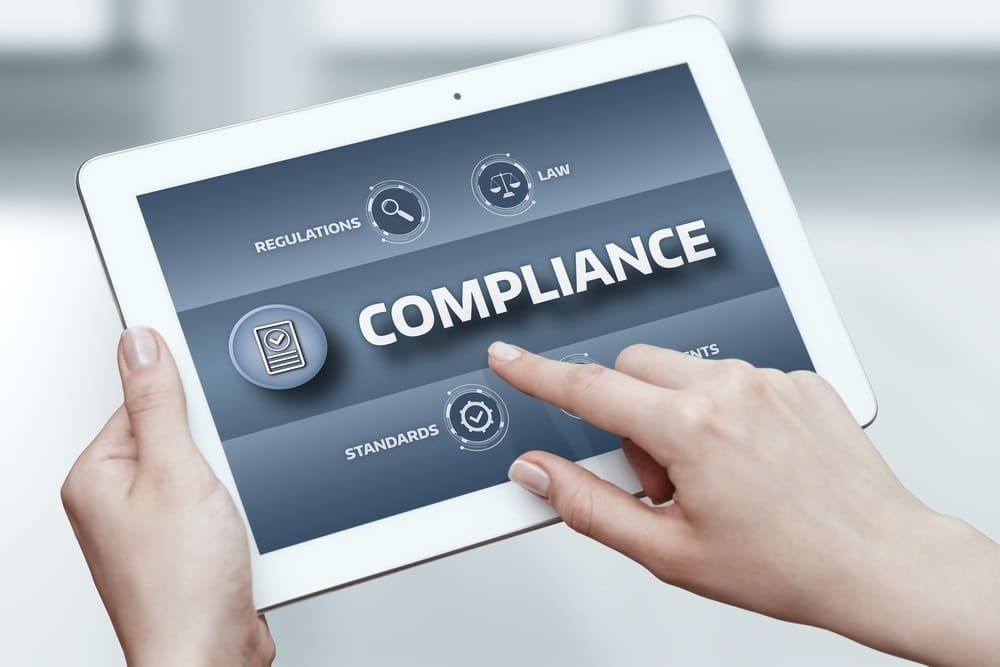Modern Office Technology: Transforming Workplaces
Modern office technology has revolutionized the way we work, transforming traditional office environments into dynamic and interconnected hubs. Gone are the days of clunky typewriters and overflowing filing cabinets; in […]

Modern office technology has revolutionized the way we work, transforming traditional office environments into dynamic and interconnected hubs. Gone are the days of clunky typewriters and overflowing filing cabinets; in their place, we see sleek laptops, collaborative software, and cloud-based platforms that streamline processes and empower employees.
From video conferencing that bridges geographical distances to project management tools that keep teams on track, modern technology has become an indispensable asset for businesses of all sizes. This shift has not only boosted productivity but has also fostered a more flexible and collaborative work environment, opening up new possibilities for remote work and global teams.
The Evolution of Office Technology: Modern Office Technology
The office environment has undergone a dramatic transformation, driven by the rapid advancement of technology. From the days of typewriters and physical filing cabinets to the modern age of cloud computing and mobile devices, the evolution of office technology has fundamentally changed how we work, communicate, and manage information.
The Shift from Traditional to Modern
The transition from traditional office equipment to modern technology has been a gradual process, marked by a series of groundbreaking innovations. In the early days, offices relied heavily on mechanical tools such as typewriters, fax machines, and physical filing systems. These tools were slow, inefficient, and often prone to errors.
- The introduction of personal computers (PCs) in the 1980s marked a significant turning point. PCs offered a more efficient way to process information, create documents, and store data.
- The development of the internet in the 1990s further revolutionized office technology. The internet enabled instant communication, collaboration, and access to vast amounts of information.
- The rise of mobile devices in the 21st century has extended the reach of office technology beyond the traditional office setting. Smartphones and tablets have empowered employees to work from anywhere, at any time.
The Impact of Technology on Tasks
Technology has significantly transformed various tasks in the office environment, enhancing efficiency, productivity, and collaboration.
Communication
The advent of email, instant messaging, and video conferencing has revolutionized communication in the workplace.
- Email has become the primary mode of communication for sharing information, sending documents, and coordinating projects.
- Instant messaging platforms allow for real-time communication, facilitating quick conversations and team collaboration.
- Video conferencing tools enable face-to-face interactions with colleagues and clients, regardless of geographical location.
Collaboration
Technology has facilitated seamless collaboration among team members, regardless of their physical location.
- Cloud-based collaboration platforms allow teams to share documents, work on projects simultaneously, and communicate effectively.
- Project management tools provide a centralized platform for tracking progress, assigning tasks, and managing deadlines.
Data Management
Technology has streamlined data management, enabling organizations to store, access, and analyze information efficiently.
- Cloud storage services allow businesses to store large amounts of data securely and access it from any device.
- Data analytics tools provide insights into business trends, customer behavior, and market dynamics.
The Influence of Cloud Computing and Mobile Devices
Cloud computing and mobile devices have significantly impacted the modern office environment, enabling flexibility, accessibility, and efficiency.
Cloud Computing
Cloud computing has transformed the way businesses store, access, and manage data.
- Cloud-based applications allow users to access software and data from any device with an internet connection.
- Cloud storage services provide a secure and scalable solution for data storage and backup.
Mobile Devices
Mobile devices have extended the reach of office technology beyond the traditional office setting.
- Smartphones and tablets allow employees to work from anywhere, at any time.
- Mobile apps provide access to essential office tools, such as email, calendars, and collaboration platforms.
Key Components of Modern Office Technology

Modern office technology has undergone a significant transformation, enabling businesses to operate more efficiently, collaboratively, and remotely. These technologies have become indispensable tools for streamlining workflows, enhancing communication, and fostering innovation.
Video Conferencing
Video conferencing has revolutionized communication and collaboration, enabling teams to connect and interact in real-time regardless of physical location. This technology allows for face-to-face meetings, presentations, and discussions, fostering a sense of presence and engagement.
- Enhanced Communication and Collaboration: Video conferencing facilitates seamless communication and collaboration, allowing teams to work together on projects, share ideas, and resolve issues in real-time, regardless of geographical distance.
- Increased Productivity and Efficiency: By eliminating the need for travel, video conferencing saves time and resources, enabling teams to be more productive and efficient.
- Improved Decision-Making: Video conferencing allows for immediate feedback and clarification, leading to better informed decisions and improved outcomes.
Popular video conferencing platforms include Zoom, Microsoft Teams, Google Meet, and Cisco Webex.
Project Management Software
Project management software provides a centralized platform for planning, organizing, and tracking projects, facilitating efficient collaboration and timely completion. These tools streamline workflows, improve communication, and enhance accountability.
- Task Management and Organization: Project management software allows for the creation, assignment, and tracking of tasks, ensuring that projects stay on schedule and within budget.
- Collaboration and Communication: These platforms provide a central hub for team communication, allowing members to share updates, discuss progress, and resolve issues effectively.
- Resource Allocation and Management: Project management software enables efficient resource allocation, ensuring that the right people are assigned to the right tasks.
- Reporting and Analytics: These tools provide valuable insights into project performance, allowing for data-driven decision-making and continuous improvement.
Examples of popular project management software include Asana, Trello, Jira, and Monday.com.
Cloud Storage Platforms
Cloud storage platforms provide secure and accessible storage for data, files, and applications, eliminating the need for physical storage devices and enabling remote access. These platforms offer scalability, reliability, and cost-effectiveness.
- Data Security and Backup: Cloud storage platforms provide robust security measures, ensuring the safety and integrity of data, with automatic backups and disaster recovery capabilities.
- Accessibility and Collaboration: Data stored in the cloud can be accessed from anywhere with an internet connection, facilitating collaboration and teamwork.
- Scalability and Cost-Effectiveness: Cloud storage platforms offer flexible storage options, allowing businesses to scale their storage capacity as needed, while also reducing costs associated with physical storage infrastructure.
Popular cloud storage platforms include Dropbox, Google Drive, Microsoft OneDrive, and Amazon S3.
Impact on Workplace Productivity and Collaboration
Modern technology has revolutionized the way we work, significantly impacting workplace productivity and collaboration. From communication tools to automation software, technology has empowered businesses to streamline operations, enhance efficiency, and foster a more connected and collaborative work environment.
Enhanced Productivity and Efficiency
The advent of modern technology has ushered in a new era of productivity and efficiency in the workplace. Tools like project management software, cloud storage, and automation platforms have transformed the way tasks are organized, managed, and executed.
- Project Management Software: Tools like Asana, Trello, and Jira provide a centralized platform for task management, allowing teams to track progress, assign responsibilities, and monitor deadlines. This streamlined approach eliminates the need for manual tracking and communication, fostering better organization and accountability.
- Cloud Storage: Services like Google Drive, Dropbox, and Microsoft OneDrive enable seamless file sharing and collaboration. Team members can access and edit documents from anywhere, eliminating the need for physical file transfer and reducing the risk of data loss. This accessibility and collaboration enhance productivity by enabling real-time updates and reducing communication delays.
- Automation Platforms: Automation tools like Zapier and IFTTT automate repetitive tasks, freeing up employees to focus on more strategic and creative work. This can range from automating email responses to scheduling meetings, significantly reducing time spent on mundane tasks and enhancing overall efficiency.
Fostering Collaboration and Teamwork
Technology plays a pivotal role in fostering collaboration and teamwork in modern workplaces. Communication tools, online collaboration platforms, and video conferencing solutions have bridged geographical barriers and enabled seamless communication and collaboration among team members, regardless of their location.
- Communication Tools: Instant messaging platforms like Slack, Microsoft Teams, and Google Chat facilitate real-time communication, allowing for quick and efficient exchange of information and ideas. This real-time interaction promotes collaboration, reduces communication silos, and fosters a more connected work environment.
- Online Collaboration Platforms: Tools like Google Docs, Microsoft Office 365, and Dropbox Paper allow teams to work on documents, spreadsheets, and presentations simultaneously. This real-time co-editing feature promotes collaboration, facilitates brainstorming, and ensures all team members are on the same page.
- Video Conferencing: Platforms like Zoom, Microsoft Teams, and Google Meet enable face-to-face communication, fostering a more personal and engaging interaction, even when team members are geographically dispersed. This allows for virtual meetings, presentations, and brainstorming sessions, effectively replicating the collaborative experience of a physical office environment.
Challenges and Considerations
While modern office technology offers numerous benefits, its implementation and utilization also come with their share of challenges. These challenges range from ensuring data security and cybersecurity to effectively training employees to adapt to new technologies.
Data Security and Cybersecurity
Data security and cybersecurity are paramount concerns in any organization, particularly with the increasing reliance on digital tools and cloud-based services. A robust data security strategy is essential to protect sensitive information from unauthorized access, breaches, and data loss.
- Data breaches: Data breaches can have devastating consequences, including financial losses, reputational damage, and legal liabilities. Implementing strong security measures, such as encryption, access control, and regular security audits, is crucial to mitigate the risk of data breaches.
- Cyberattacks: Cyberattacks are becoming increasingly sophisticated and targeted. Organizations must stay vigilant against phishing attacks, malware infections, and ransomware attacks. Investing in advanced cybersecurity solutions, such as firewalls, intrusion detection systems, and endpoint security software, is essential to protect against cyber threats.
- Data privacy regulations: Compliance with data privacy regulations, such as the General Data Protection Regulation (GDPR) and the California Consumer Privacy Act (CCPA), is crucial. Organizations must implement policies and procedures to ensure that they collect, store, and use personal data responsibly and in accordance with applicable laws.
Employee Training and Digital Literacy
Successfully implementing modern office technology requires a workforce that is equipped with the necessary skills and knowledge to utilize these tools effectively. This necessitates a comprehensive employee training program that addresses both technical and soft skills.
- Technical skills: Employees need to be proficient in using the specific software and hardware they will be working with. This includes training on collaboration platforms, productivity tools, and other relevant technologies.
- Soft skills: Digital literacy is essential for navigating the modern workplace. Employees need to be comfortable with online communication, information research, and digital collaboration. Training should also focus on developing critical thinking, problem-solving, and adaptability skills.
- Continuous learning: Technology is constantly evolving, so it is important to invest in ongoing training and development opportunities for employees. This ensures that they stay up-to-date with the latest technologies and can effectively adapt to new tools and processes.
Adapting to New Technologies, Modern office technology
The rapid pace of technological advancements can be overwhelming for some employees. Organizations need to create a culture of continuous learning and encourage employees to embrace new technologies.
- Change management: Introducing new technologies requires careful planning and communication. Employees need to be informed about the benefits of the new technology and how it will impact their work. Providing adequate training and support is essential for a smooth transition.
- User-friendly interfaces: Modern office technology should be designed with user-friendliness in mind. Intuitive interfaces and easy-to-understand instructions can make it easier for employees to adapt to new tools.
- Employee feedback: Regularly seeking employee feedback on new technologies is crucial. This allows organizations to identify any challenges or areas for improvement and make necessary adjustments.
Future Trends in Office Technology
The world of office technology is constantly evolving, driven by advancements in artificial intelligence, automation, and the Internet of Things (IoT). These trends are poised to fundamentally reshape the future of work, creating a more efficient, collaborative, and personalized workplace.
Impact of Emerging Trends on the Future of Work
The convergence of AI, automation, and IoT is ushering in a new era of work characterized by:
* Increased Efficiency and Productivity: AI-powered tools and automated processes streamline repetitive tasks, freeing up employees to focus on higher-value activities.
* Enhanced Collaboration and Communication: IoT devices and collaborative platforms facilitate seamless communication and information sharing, fostering a more connected and agile workforce.
* Personalized Work Environments: AI algorithms can personalize workspaces and workflows, tailoring them to individual preferences and needs.
* Remote Work and Flexibility: Advanced technologies enable remote work and flexible schedules, empowering employees to work from anywhere and anytime.
* New Job Roles and Skills: The rise of AI and automation will create new job roles focused on data analysis, AI development, and human-machine interaction.
Hypothetical Office Environment Utilizing Future Technologies
Imagine an office environment where:
* AI-powered assistants anticipate employee needs, scheduling meetings, managing calendars, and providing real-time information.
* Smart sensors monitor environmental conditions, automatically adjusting lighting, temperature, and air quality for optimal comfort.
* Collaborative robots assist with tasks such as document processing, data entry, and logistics, freeing up human employees for more creative and strategic work.
* Virtual reality (VR) and augmented reality (AR) technologies create immersive training programs and collaborative workspaces, enabling employees to learn and work together from anywhere in the world.
* Data analytics dashboards provide real-time insights into team performance, project progress, and employee engagement, allowing managers to make informed decisions.
Last Word
As technology continues to evolve, we can expect even more innovative solutions to emerge, further shaping the future of work. The modern office is a testament to the power of innovation, offering a glimpse into a future where efficiency, collaboration, and agility are paramount. By embracing these advancements, businesses can unlock their full potential and thrive in an increasingly competitive global landscape.
Modern office technology has come a long way, offering tools to streamline workflows and enhance productivity. For those seeking a reliable and versatile multifunction printer, the armada technologies pro 900 is a great option. This printer boasts impressive features, including high-speed printing, scanning, and copying, making it a valuable asset for any busy office environment.










